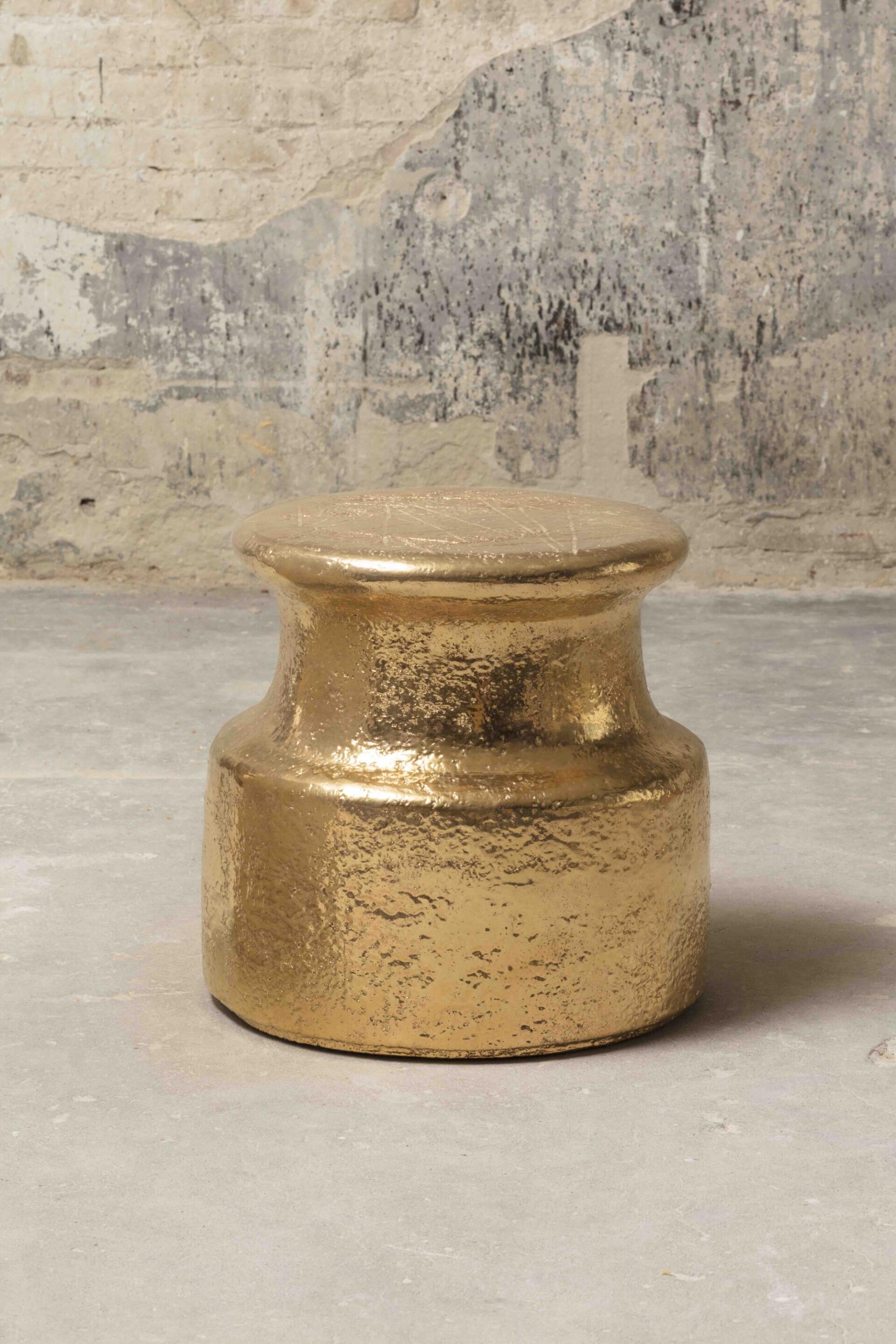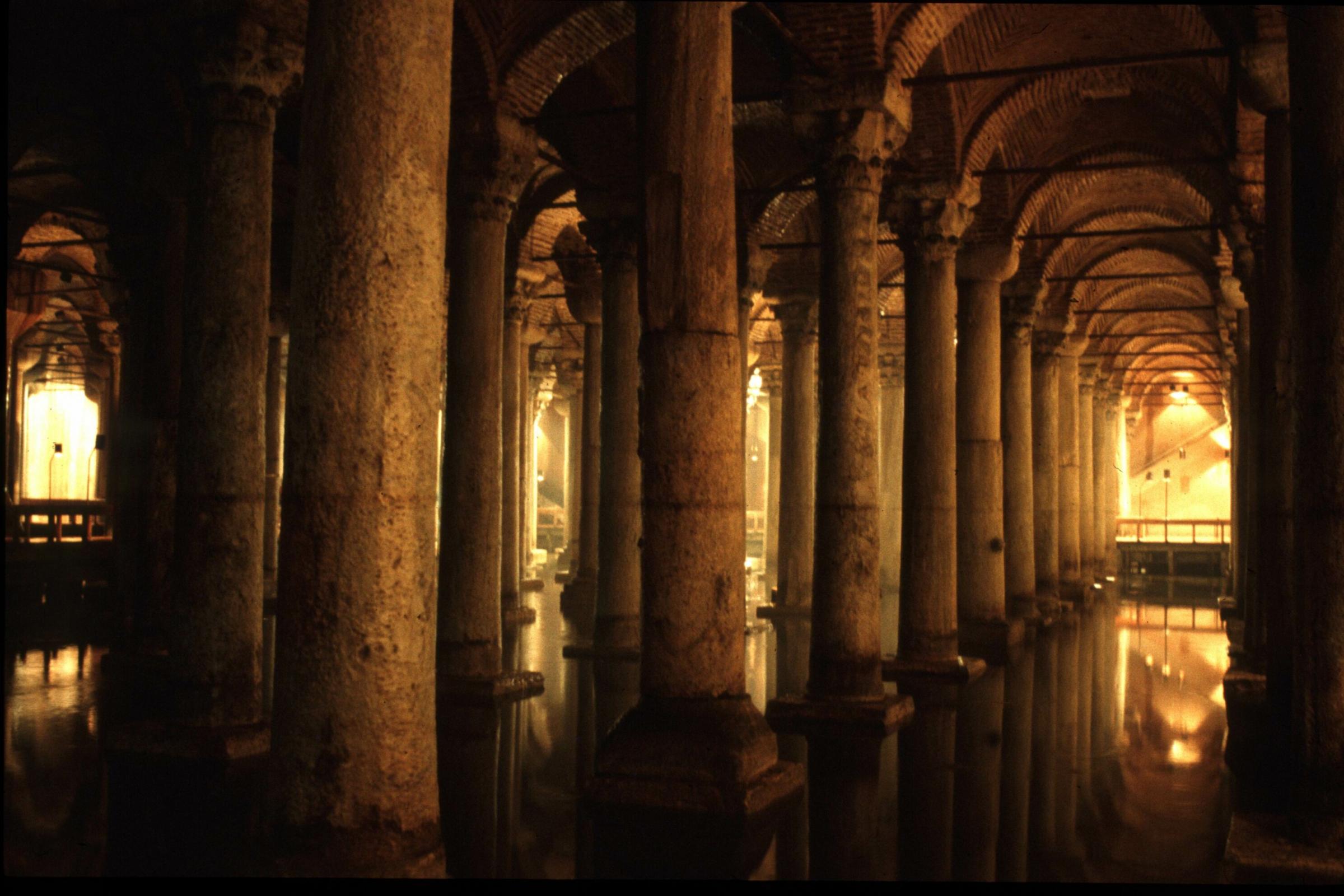
The series entitled "Points d'Observation" is an unlimited edition of unique works made of glazed stoneware or bronze.
The "Points Observation" were first created by Johan Creten for his various exhibitions (CRAC of Sète, Beelden Aan Zee Museum, Villa Medici of Rome...) and are intended to allow the public to sit and take the time to observe the sculptures exhibited.
Several configurations of this work are possible. Associations of individual points, as well as unique and indivisible constellations, like the one presented at the Museum of Modern Art of the City of Paris, in the Dufy room, could be seen in several places of exhibition.

At first glance, the "Points d'Observation" look like classic pedestals, but they are sculptures.
Their shape is very specific and their height is perfect for sitting and having a view on the exhibition. With their smooth texture and cool touch, these sculptures resemble the traditional plinth of ancient Rome, or the shower base of classical sculpture.
By sitting on Johan Creten's seats, the visitors transform themselves into a sculptural object.




These different installations of "Points d'Observation" allow the development of historical, sociological and political reflections.
The "Points d'Observation" also resemble game pieces, such as chess pieces arranged on a board. As such, they are part of a dynamic of links (between them and between the spectators), strategies and interactions that can go as far as confrontation. The political game that the Observation Points reveal can almost make us think of the global game of power relations. By their color, the points represent each time groups, schools, tribes, entities...


Even if they suggest the idea of a certain stability, by their propensity to be bases, and by their form which takes that of a base, their nature is no less fluid and active. They also speak of movement and temporality.
In summary, the artist's idea is the following:
- One "Point d'Observation" represents a place of reflection, of observation; a place where the individual relates to the environment that surrounds him
- Two "Points d'Observation" allow for the creation of a space for discussion and communication
- Three "Points Observation" symbolize an invitation to a third person; in other words: the opening of the circle
- Four or more "Points d'Observation" form the idea of a community


Since the seats created by the artist can move, the groupings are always mobile and evolving, throughout the installation.
As in the CRAC of Sète or during the exhibition "Les Flammes" at the Museum of Modern Art of the City of Paris, the installation is never fixed, it is in perpetual transformation. The works are thus conceived in this sense since they are fixed to a thin sheet of felt, which allows them to slide easily from one place to another.

Finally, the shape of the "Point d'Observation" is reminiscent of the "mooring bollards" - the object with which sailors tie up their boats - found in ports. Both an anchor and a point of departure, the Observation Point symbolizes the journey in the manner of a museum. In this way, the shape of the "Point d'Observation" also takes on a double meaning in French, in the form of a vulgar pun with the "male sex" which is represented as sturdy, strong, immovable, fixed.
Sex, the foundation of the world.
As such, this major conceptual artwork in the artist's career employs ceramics in a way that is both discreet and subversive.

